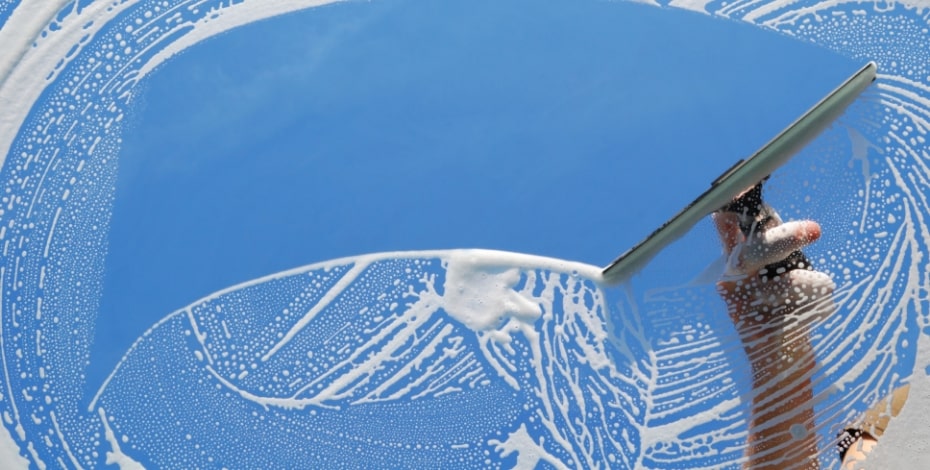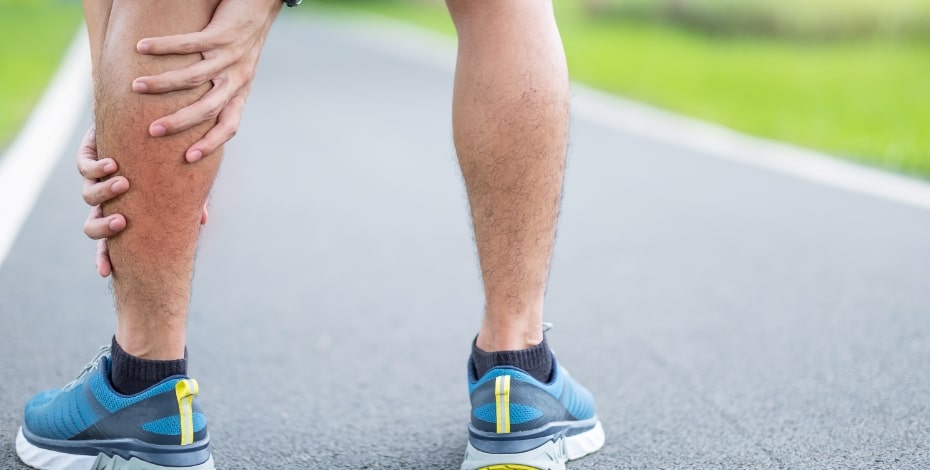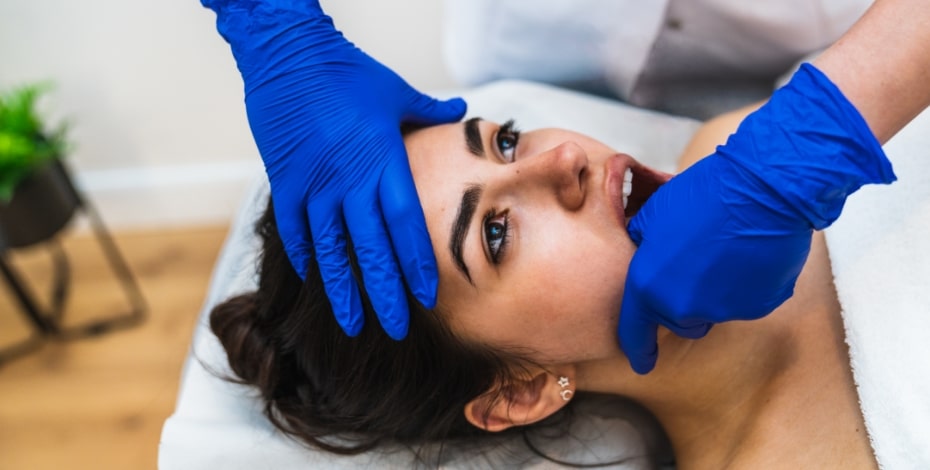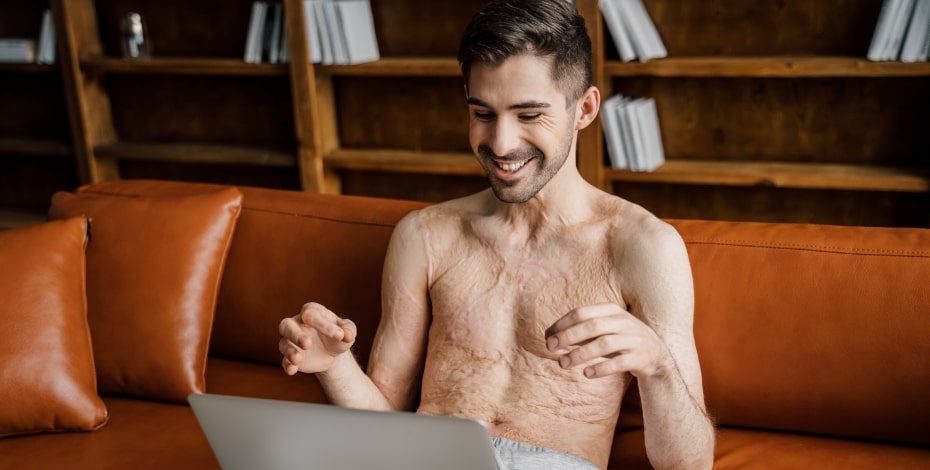
Love your work

Behind the APA is a host of engaged members who give their time and expertise to be on committees, develop and review professional development courses, take on leadership roles in national groups and state branches, and help drive advocacy at a state and national level. Here seven members tell us what they do behind the scenes and why.
BELINDA MAYGER
Belinda Mayger is part of the team revising and updating the Sports Physiotherapy Level 1 and 2 courses.
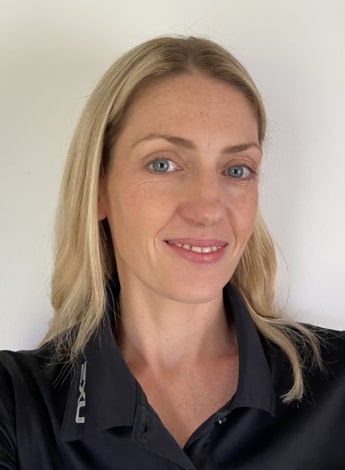
Belinda Mayger is helping to revise the APA sports courses
My most recent role within the APA was chair of the education committee, which is a subcommittee of the Sports and Exercise national group.
It was set up by John Fitzgerald APAM MACP (national group chair in 2021–22) as a way to direct more resources to areas needing attention.
The role focused on assisting with the revision process and course design for the current Sports Physiotherapy Level 1 and 2 courses, including reviewing course content and contributing to the formation of new and/or revised course outlines and associated intended learning outcomes.
I worked closely with the APA’s Education Development team and owe a lot to its manager Anita Kosterlitz for her guidance.
A member of the APA since my student days, I started out as a fresh-faced committee member of the Western Australian branch of the Sports and Exercise group in 2017 after getting in touch with previous chair Lauren Shelley.
I initially joined to aid my application for entry into the Sports Physiotherapy Level 3 course, a requirement for completion of my sports physiotherapy master’s.
Unexpectedly yet willingly, I found myself putting my hand up for the chair position, which I undertook from 2019 to 2022.
This led to national group involvement and that’s how I ended up in my recent role revising the APA sports courses.
My involvement with the APA over the past six to seven years has opened my eyes to just how much work goes on behind the scenes in all areas of our profession.
I have gained professional and personal experience, working alongside other physiotherapists with whom I would not otherwise have had the pleasure of collaborating and developing my own learning areas, where I previously had limited exposure.
Not to mention that I now have a great network of colleagues at my fingertips, both locally and nationally.
Belinda Mayger APAM MACP is an APA Sports and Exercise Physiotherapist based in Perth. She splits her time between private practice and sporting team commitments. She currently works part-time at Karrinyup Physio and is a physiotherapist for the Swan Districts league and reserve teams in the West Australian Football League.
CAMERON EDWARDS
Cameron Edwards is the vice-chair of the Aboriginal and Torres Strait Islander Health Committee and the host of the APA’s podcast series The Deadly Physios.
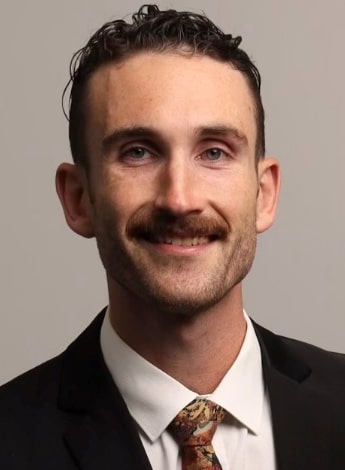
Cameron Edwards hosts the Deadly Physios podcast and is vice-chair of ATSIHC
I have three roles within the APA.
The first is as a member, contributing to conversations that help our peak body represent our profession.
Secondly, I am the vice-chair of the Aboriginal and Torres Strait Islander Health Committee, which exists to advocate and provide a voice for First Nations health.
Lastly, I am privileged to host the APA’s podcast series The Deadly Physios, which provides a platform for the deep wisdom and experience of our First Nations physios.
My involvement began after I attended the APA national conference in Sydney as a student.
I was able to network with incredible mentors, expand my horizons in terms of what physios are capable of and appreciate the work that the APA had done to host such a wonderful conference.
I started with some simple steps like becoming a member of the organisation, applying to sit on the Aboriginal and Torres Strait Islander Health Committee and joining the Reconciliation Action Plan implementation working group.
I just wanted to get involved and to give back to a profession for which I am immensely grateful.
Personally, I have established a strong network of peers, mentors and friends.
While many of these friendships have also resulted in professional collaborations, I really appreciate knowing that I can pick up the phone and just have a yarn with them.
As a result, I have grown as a person—expanding my perspectives as I hear about the experiences of others.
Professionally, I have been blessed with opportunities to write in InMotion, speak at APA conferences, attend workshops, gain boardroom experience, host a podcast and glean knowledge from industry leaders.
A pretty good investment, I would argue.
Cameron Edwards APAM is a proud Christian, Kamilaroi man and physiotherapist at the Children’s Hospital at Westmead in Sydney, New South Wales. As the host of The Deadly Physios, Cameron welcomes the opportunity to share the stories of First Nations physios and allies from around the country.
COBIE STARCEVICH
Cobie Starcevich is the clinical editor of the APA Musculoskeletal group publication InTouch and a committee member of the group’s Western Australian branch.

Cobie Starcevich is clinical editor of InTouch and a committee member for the APA musculoskeletal group's WA branch
I have volunteered on the committee of the Western Australian branch of the APA’s Musculoskeletal national group for the past six years and have been the clinical editor of InTouch, the Musculoskeletal group’s quarterly publication, for four.
My role on the committee is to develop ideas for local lectures and professional development events, convene courses held in Western Australia, provide input on issues that come down from the national committee and communicate with it about issues that affect the Western Australian musculoskeletal physiotherapy community.
In my role as clinical editor of InTouch, I curate content every quarter.
The majority of our readers are musculoskeletal physiotherapists working within private practice and I aim to provide balanced content on contemporary topics.
After finishing my Master of Musculoskeletal Physiotherapy, I was looking for a way to connect with the profession and remain up to date.
The master’s degree had a steep learning curve and I worried that I’d lose touch with contemporary practice after graduating and going back to work in a private clinic.
I consulted with some of my professors and they suggested that I join the Musculoskeletal group in my state.
Since becoming a member of the committee, I have been actively involved in organising local lectures and networking events in Western Australia, covering a wide range of topics.
Working within the APA has been very beneficial for me professionally.
Through my editing role, I get to talk to a lot of inspiring physiotherapists and researchers, people who’ve shaped the profession and are driving change.
I have made connections that I otherwise wouldn’t have made that have advanced my research career outside of the APA.
On the Musculoskeletal committee, I have made wonderful friends who share my passion for improving patient care by elevating the standard of the physiotherapy profession.
Cobie Starcevich APAM is an advanced scope musculoskeletal physiotherapist in the emergency department at Rockingham General Hospital and a PhD candidate at Curtin University. Cobie teaches physiotherapy at an undergraduate level and her research focuses on fear of reinjury in athletes with anterior cruciate ligament injuries.
DAVID MUNRO
David Munro is the head physiotherapist at the National Institute of Circus Arts and has been working on the APA’s position in relation to concussion.

David Munro is working with the APA's advocacy team on concussion
I am an ex-officio member of the APA Sports and Exercise national group and have been assisting it, in conjunction with the Neurology national group, to establish a working group looking at where the APA sits within the ever-evolving area of concussion, specifically sports-related concussion.
Recently, the Australian Institute of Sport invited the APA, along with the Australasian College of Sport and Exercise Physicians and Sports Medicine Australia, to contribute to its Concussion and Brain Health Position Statement 2023.
As part of the working group, I have been helping to frame and define within this document the role of Australian physiotherapy and how we work with other healthcare professionals to manage sports-related concussion.
I originally joined the APA as an undergraduate in the early 90s.
I remember feeling a sense of belonging to a larger group as I started to make my way as a freshly minted physio.
Having worked overseas for several years, I have always been proud to be an Australian-trained physiotherapist and I see the APA as our collective voice across our broad range of specialities.
Professionally, I have seen the APA grow over time, particularly in its advocacy and its representative roles.
As the healthcare environment evolves, it is important for the APA to continue to promote Australian physiotherapy.
Sports-related concussion is a good example of an area where the APA is working to represent the role that physiotherapy plays in managing a particular presentation.
Personally, I’ve met great people along the journey and developed a deeper understanding of how much time, effort and expertise some people volunteer to the APA.
Dr David Munro APAM graduated from the University of Melbourne in 1996 and has a PhD in exercise physiology from Monash University. Largely working in private practice, he has been the head physiotherapist at the National Institute of Circus Arts since 2001 and in 2004 was awarded a Winston Churchill Memorial Trust Fellowship to study the role of physiotherapy in the circus arts.
KELLY BOWER
Kelly Bower is a physiotherapist, a senior lecturer and a member of the Physiotherapy Research Foundation’s Grants Review Committee.
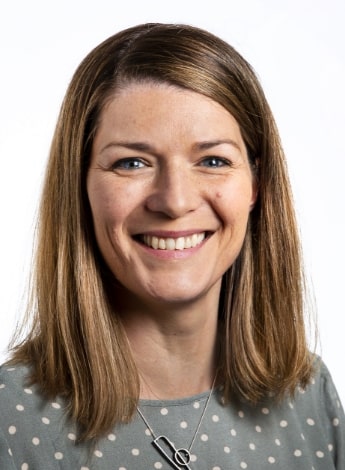
Kelly Bower is on the PRF's Grants Review Committee.
I am privileged to contribute as a recent member to both the Physiotherapy Research Foundation’s Grants Review Committee and the APA conference neurology scientific committee.
In the Grants Review Committee, my responsibilities include reviewing and providing feedback on grant submissions and securing independent assessors for additional input.
In my APA conference committee role, I contribute to abstract submission reviews and conference organisation.
This includes the facilitation of speaker invitations, awards and scheduling as well as the opportunity to chair conference sessions.
These roles involve regular meetings with a group of supportive and engaged committee colleagues.
I have been involved with the APA for a long time, including as a prior committee member of the Victorian branch of the APA Neurology national group and through grant application and conference participation.
I became aware of the positions on the conference and grants review committees through my connections with existing and past committee members and applied for them due to a desire to develop my leadership and service skills and to expand my professional network.
I also felt it was an opportunity to contribute to strengthening the standards of physiotherapy research and practice.
My engagement with these committee roles has brought both personal and professional benefits.
I have enjoyed the close teamwork and learning fostered by regular meetings and interesting discussions in a supportive environment in which input and feedback are valued.
Collaborating with APA conference committee members who share my passion for neurological physiotherapy has been inspiring and rewarding, while the Physiotherapy Research Foundation committee has broadened my knowledge beyond my usual area of practice.
I have expanded my research skills as I gain insights from other reviewers and from quality research submissions.
I have also learnt some great organisational skills because I am exposed to rigorous review and event preparation processes.
Dr Kelly Bower APAM is a senior lecturer in teaching and research at the University of Melbourne and a physiotherapist at the Royal Melbourne Hospital. She completed her PhD in 2016 and has a passion for stroke rehabilitation, falls prevention and exploring the potential of technology to optimise recovery and function.
PHIL NEWMAN
Phil Newman is a member of the Australian College of Physiotherapists Council.
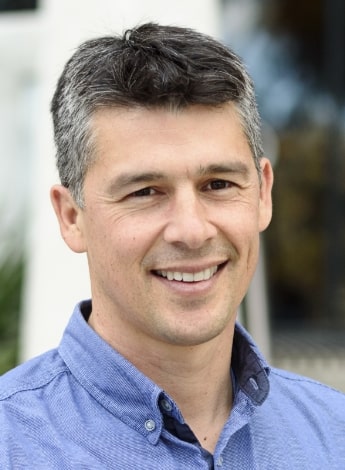
Phil Newman is a member of the Australian College of Physiotherapists Council
I am an elected member of the Australian College of Physiotherapists’ College Council, which oversees the functions of titling and specialisation for physiotherapists.
The College Council includes College staff and Fellows and Members of the College.
Council responsibilities encompass governance of the College, oversight of curriculum design, approval of the granting of qualifications and strategic planning, all in consultation with multiple subcommittees.
I have been involved in APA committee work on and off over my 30-year career, which has been great for meeting people and making connections.
I’ve made lifelong friends through committee work, further study and research roles.
I’ve also enjoyed a long and diverse career, with broad experience in leadership and governance roles through service on multiple corporate, academic, professional and community boards.
Maintaining roots in clinical practice, exploring frontiers in research and helping to develop the next generation of practitioners is what keeps me engaged with the breadth, challenges and opportunities of physiotherapy.
Physiotherapists have a lot to offer the healthcare system, yet most work under constrained scope.
It is very important that we showcase our value and rigorously measure our knowledge and skills so we can justify our claims to expertise.
I have taught physiotherapy at both graduate and postgraduate levels and I have worked clinically in extended scope roles.
I see the pressures and the limited resources of universities and the threat this poses to the quality of training.
I am passionate about maintaining the authenticity and integrity of our profession.
To this end, physios need to be trained to the highest standard possible.
Change and adaptation are important in order to meet changing needs in new contexts, but our principles and standards must not diminish.
Dr Phil Newman APAM MACP is a clinician, educator and researcher with more than 30 years of clinical experience. Phil has been an APA member for 27 years and an APA Sports and Exercise Physiotherapist for 22 years.
SHIHOKO PEARSON
Shihoko Pearson is a former committee member of the Victorian branch of the Cardiorespiratory national group and was part of the team that redeveloped the APA’s Cardiorespiratory Level 1 course to have a virtual format.

Shihoko Pearson is part of the team that redeveloped the Cardiorespiratory Level 1 course
After almost four years as a senior clinician in ICU, I have recently transitioned into a newly appointed position as the Cardiac Prevention and Rehabilitation Clinical Lead at the Victorian Heart Hospital, Monash Health.
In these roles, I was part of the governance team coordinating 22 clinicians as we redeveloped the APA Cardiorespiratory Level 1 course into a wholly virtual version on the cpd4physios platform.
I was a committee member of the Victorian branch of the APA Cardiorespiratory group for two terms and was chair (contributing to the national group committee) in 2017–18.
I’ve been invited to speak at a future Cardiorespiratory group committee meeting for in-house mentoring and I look forward to sharing my experiences.
I became a student member of the APA in 2005 and I’ve been a financial member since graduating in 2006.
While the main driver for joining was access to discounted professional development, I have always believed in contributing to the wider profession and continue my membership so as to be regularly updated on the APA’s advocacy efforts and news relevant to the profession.
After working for several years in a grade 2 position, I was looking for an opportunity for leadership development and my supervisor at the time suggested applying for the Cardiorespiratory group committee role.
Along with the leadership opportunities that I was seeking, contributing to the Cardiorespiratory group as a committee member has given me additional teamwork skills and a better sense of community, as I was actively working for others within the profession.
It also provided an excellent platform for networking.
The professional development available is varied and relevant and every conference provides an inspirational environment in which to grow.
The development of the APA Cardiorespiratory Level 1 course was an opportunity for project management that complemented my clinical skill set.
Shihoko Pearson APAM is the Cardiac Prevention and Rehabilitation Clinical Lead at the Victorian Heart Hospital. She has a Master of Public Health from MonWash University and has worked in cardiorespiratory roles at Melbourne Health and Monash Health for 16 years.
>>If you have a story to tell about what you do for the APA, please let us know. You can email us at inmotion@australian.physio
© Copyright 2023 by Australian Physiotherapy Association. All rights reserved.


